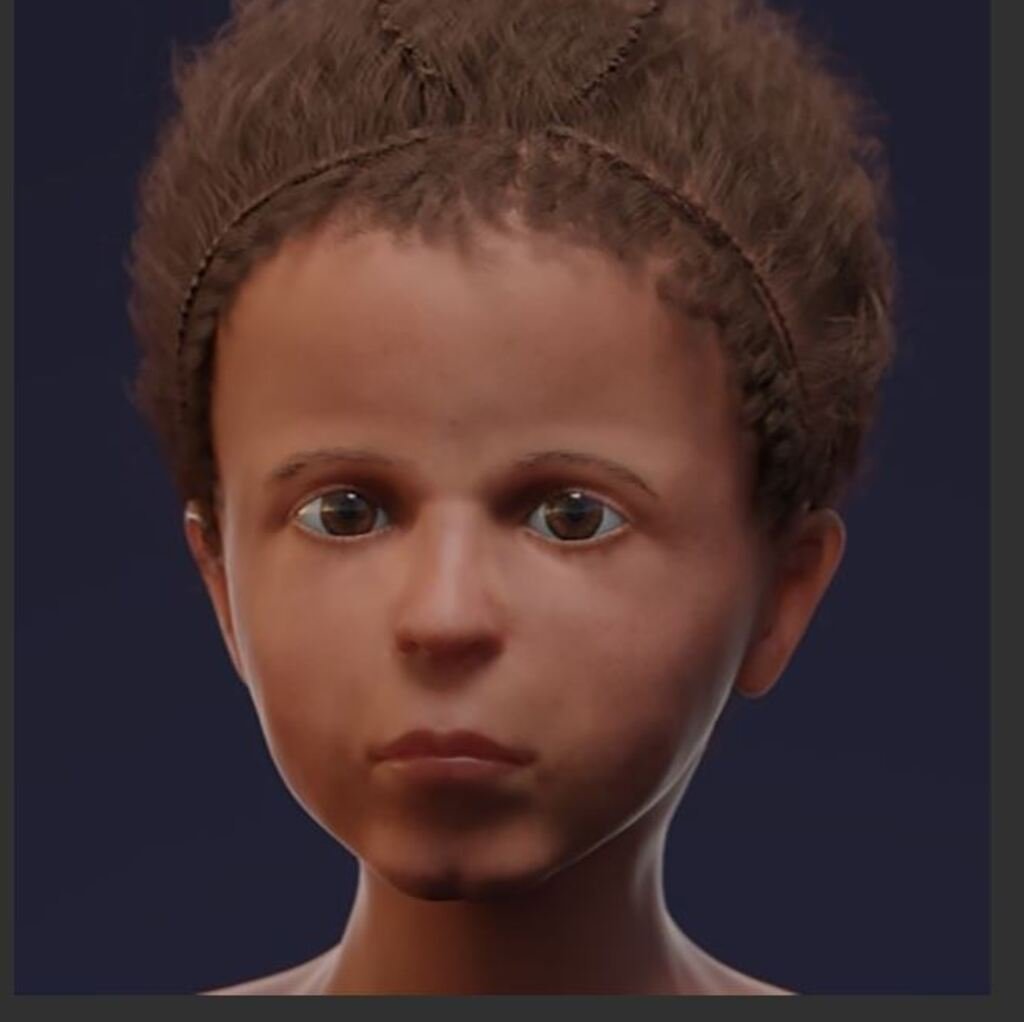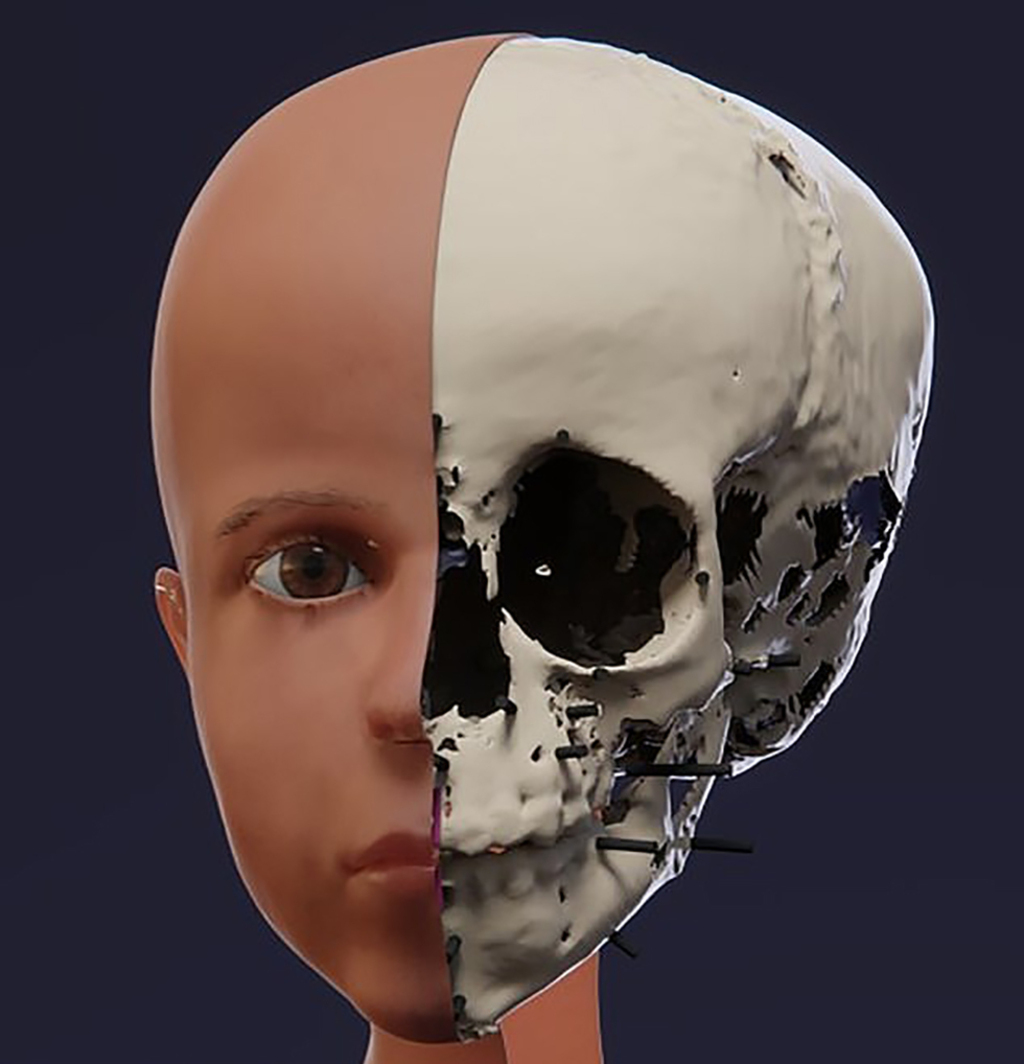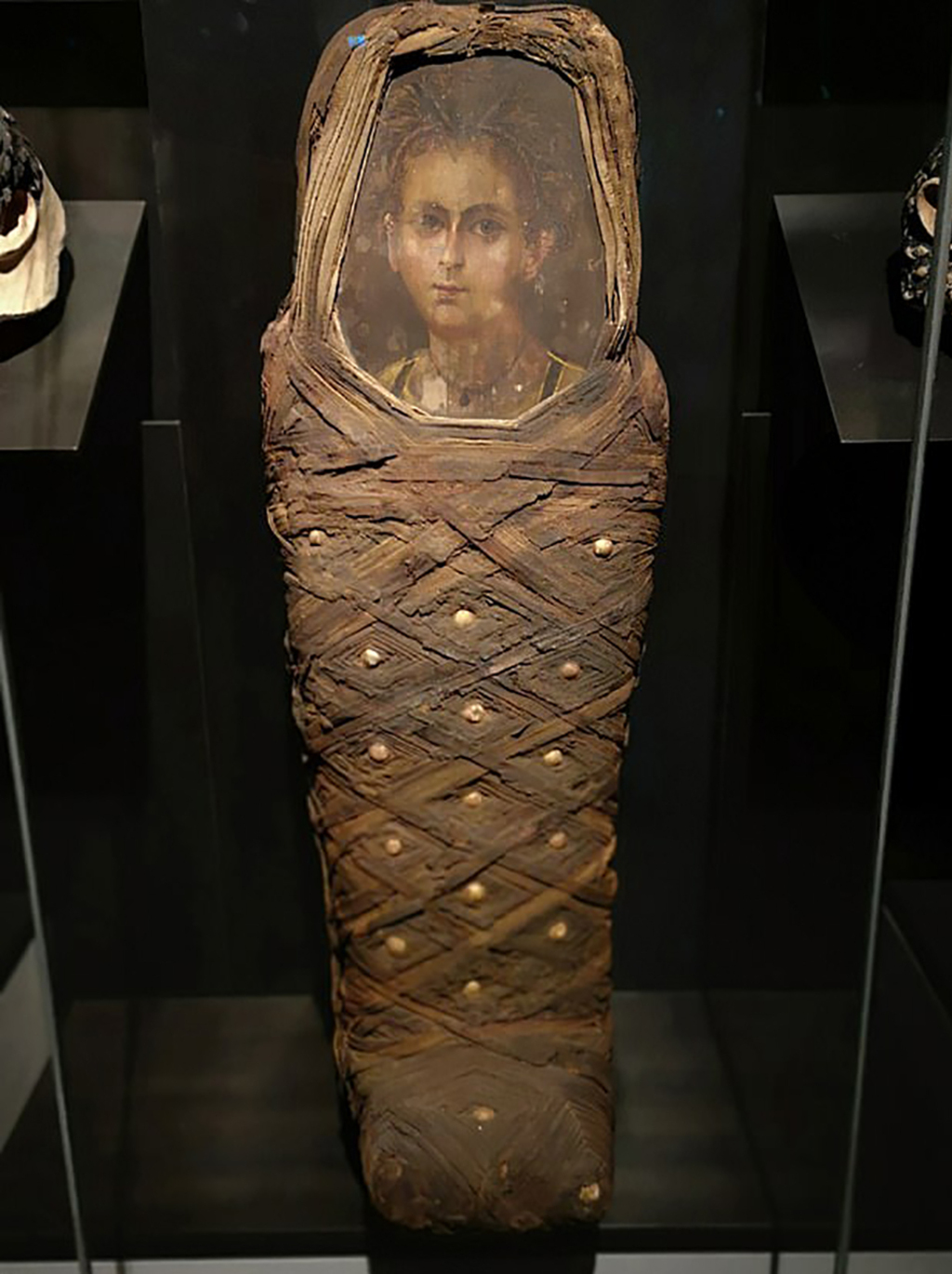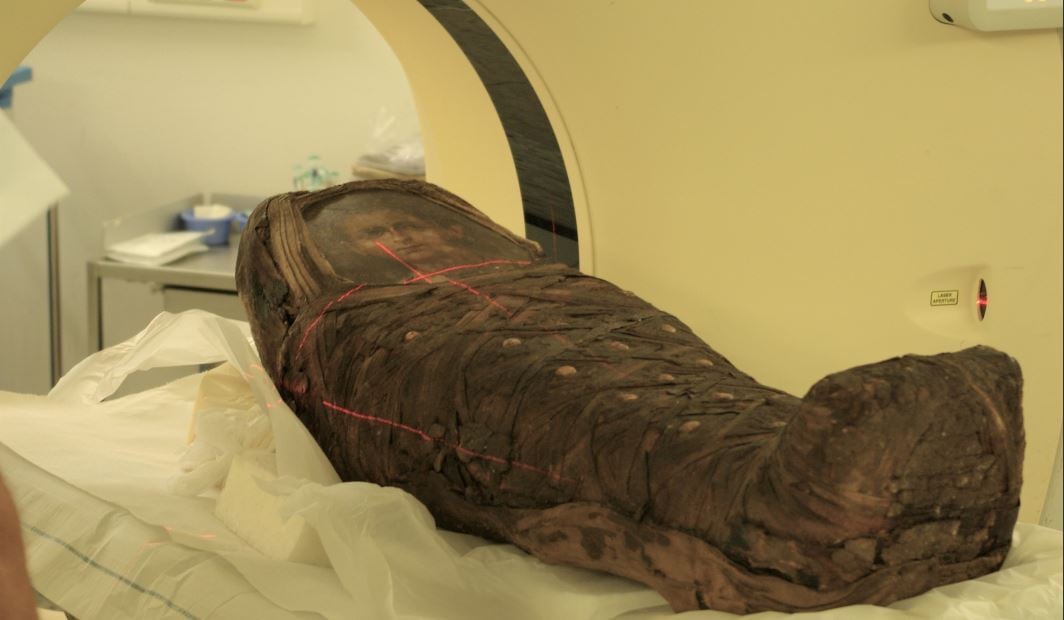A team of researchers from Austria and Germany have virtually reconstructed the face of an Egyptian child who was mummified and buried over 2,000 years ago.
According to the researchers, the embalmed face of the mummy bears a portrait of the deceased, who researchers claim died when he was about 3 years old, sometime between 50 BCE and 100 CE.
Using a CT scan, the team scanned the child’s skeleton in order to gather the needed data to virtually reconstruct his face.
Using data from the scan, the researchers were able to construct a virtual image of the child, which was later compared to biometric data obtained from the portrait.
In order to avoid bias, the artist who handled the facial reconstruction was deliberately kept away from any images or specific information concerning the portrait, which depicted a child with curled hair woven into two hair strands, large brown eyes, a long, thin nose and a small mouth with full lips.
In the study published in the scientific journal PLOS ONE, the researchers note that the facial reconstruction had turned out relatively similar to the portrait, although the portrait portrayed the child older than he actually was at the time of his death.
"The portrait shows slightly 'older' traits, which may have been the results of an artistic convention of that time," Andreas Nerlich, the lead researcher of the project and director of the Institute of Pathology at the Academic Clinic Munich-Bogenhausen in Germany, told the Live Science website.
The 78-centimeter mummy was discovered in the 1880s in a cemetery close to the pyramid of Hawara in Lower Egypt.
It was custom of placing a portrait over the mummy’s face was unique to the Ancient Egyptian Greco-Roman period. The rest of the body, however, was wrapped in linen bandages according to the typical ancient Egyptian funeral rites.
Since they were first discovered in 1887, approximately 1,000 such portraits have been discovered; like this mummy, most were found in the Fayoum area of Egypt.





